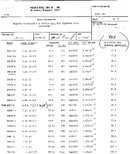Charles2
Contributor
Yep.
Thank God they're different, I'm not a fan of the buoyancy swing of yours.
Does your air not weigh the same as ours? Seems like the buoyancy swing would be the same whether it is 80cf or 2265 liters - or - pounds or kilograms.
Maybe we can sneak the metric system into our country while the government is shut down?





